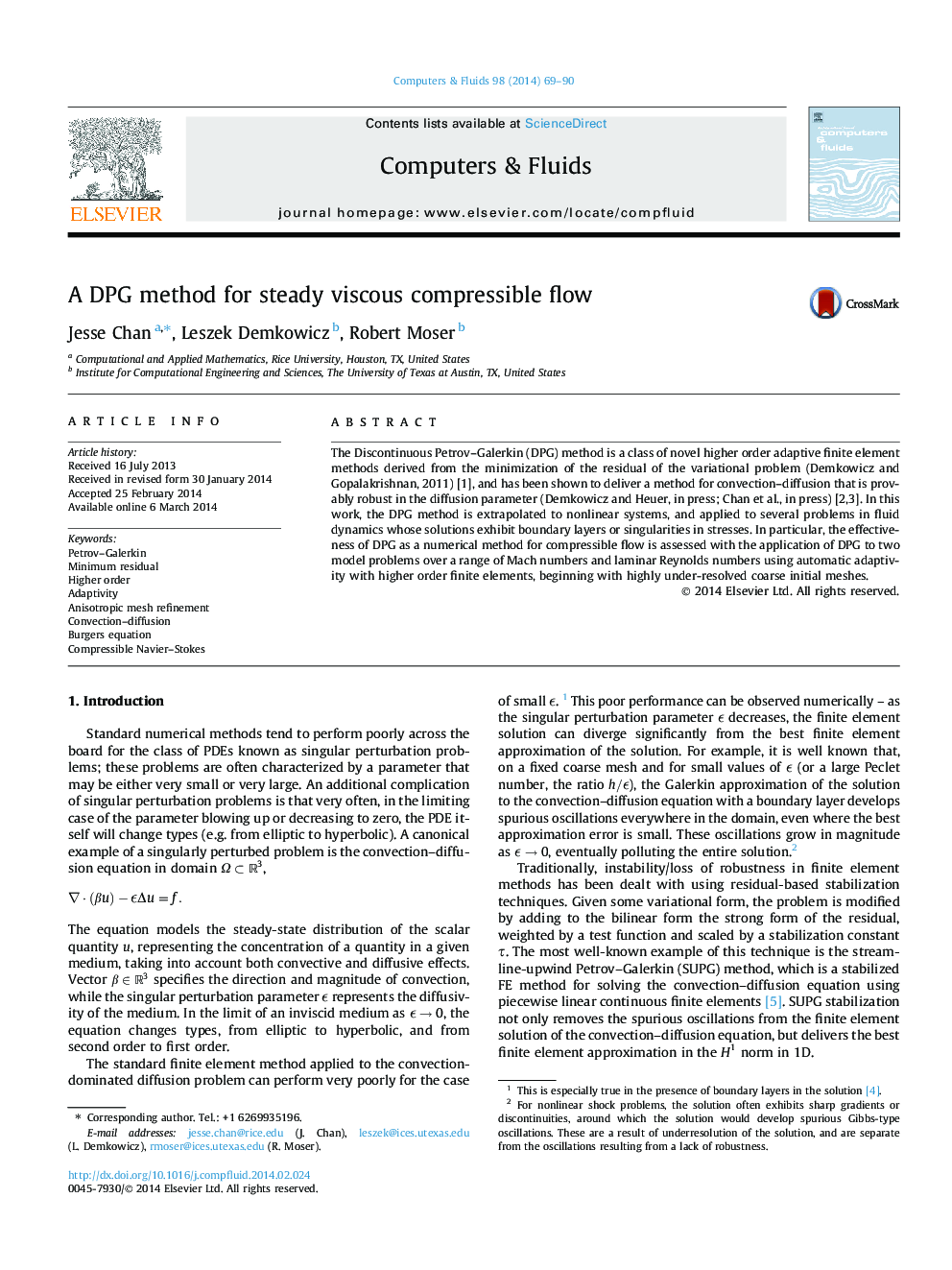| کد مقاله | کد نشریه | سال انتشار | مقاله انگلیسی | نسخه تمام متن |
|---|---|---|---|---|
| 756490 | 1462712 | 2014 | 22 صفحه PDF | دانلود رایگان |

• We summarize the higher order adaptive Discontinuous Petrov–Galerkin method.
• We extrapolate a DPG method for convection–diffusion problems to nonlinear systems.
• We present numerical results using adaptivity for a Burgers’ equation with a shock.
• We present adaptive results for two model problems in viscous compressible flow.
The Discontinuous Petrov–Galerkin (DPG) method is a class of novel higher order adaptive finite element methods derived from the minimization of the residual of the variational problem (Demkowicz and Gopalakrishnan, 2011) [1], and has been shown to deliver a method for convection–diffusion that is provably robust in the diffusion parameter (Demkowicz and Heuer, in press; Chan et al., in press) [2,3]. In this work, the DPG method is extrapolated to nonlinear systems, and applied to several problems in fluid dynamics whose solutions exhibit boundary layers or singularities in stresses. In particular, the effectiveness of DPG as a numerical method for compressible flow is assessed with the application of DPG to two model problems over a range of Mach numbers and laminar Reynolds numbers using automatic adaptivity with higher order finite elements, beginning with highly under-resolved coarse initial meshes.
Journal: Computers & Fluids - Volume 98, 2 July 2014, Pages 69–90